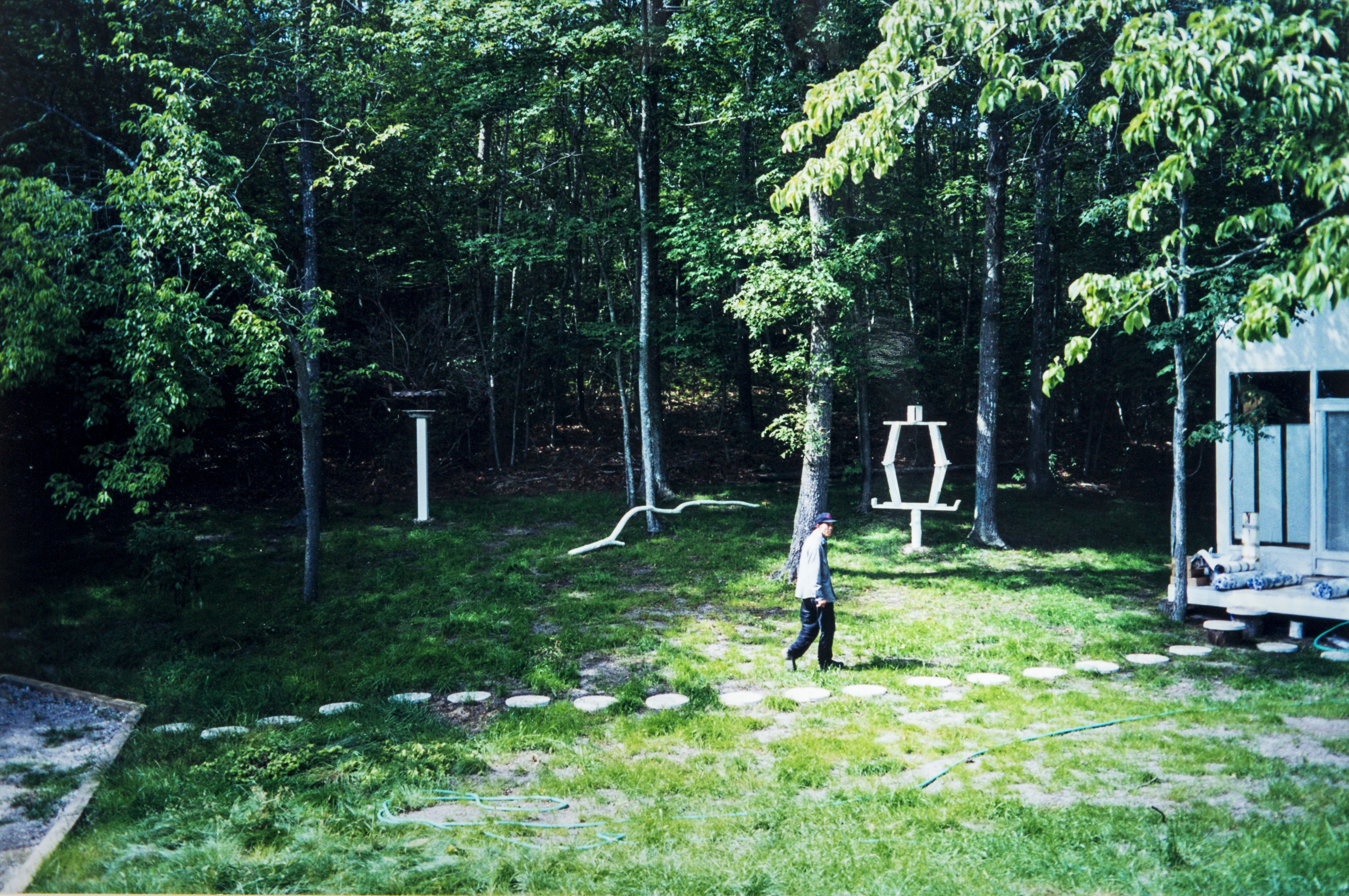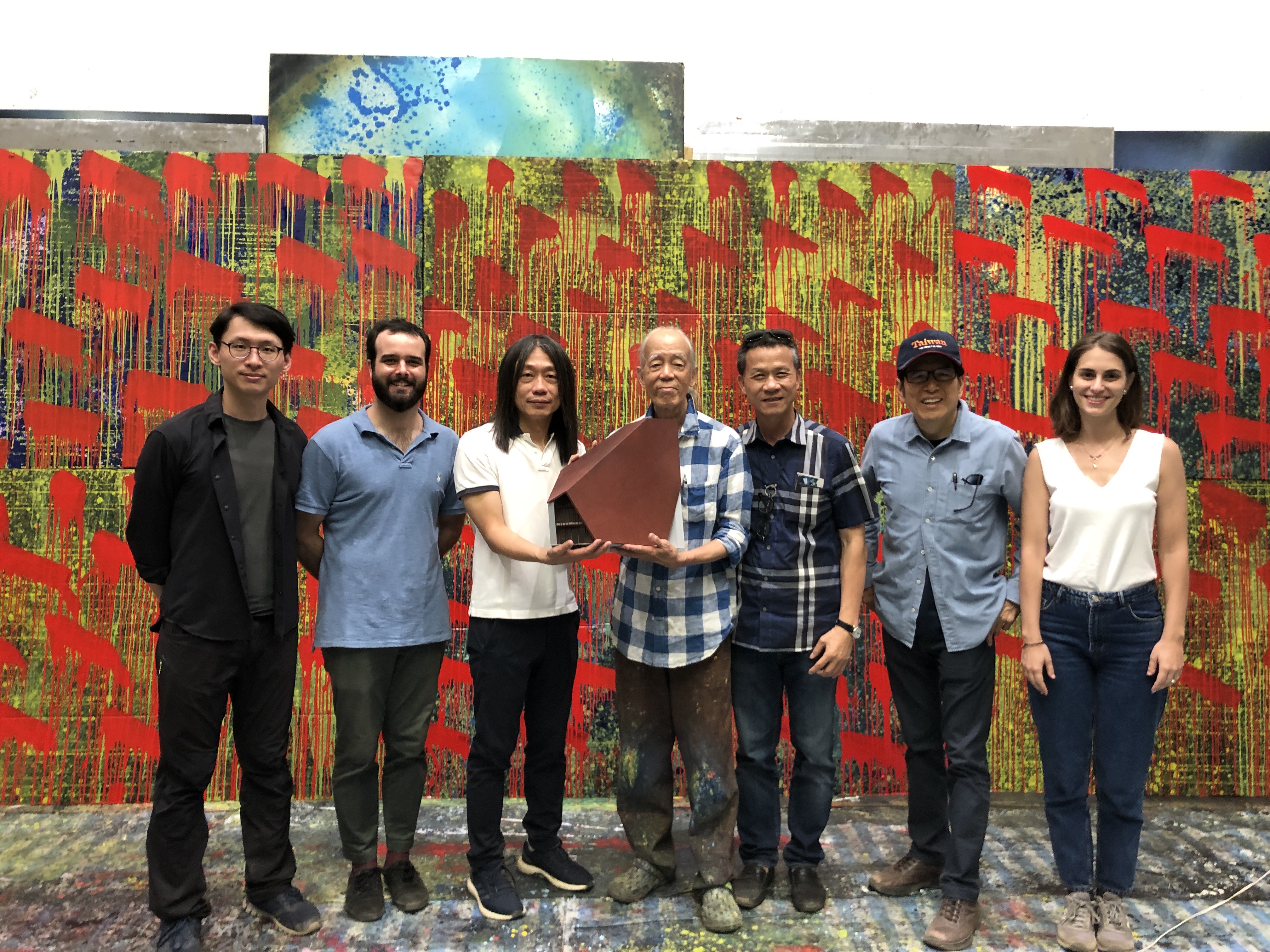Hualien-Taitung (Huatung) is not only home to breathtaking natural landscapes but also rich in artistic potential. Located in Jinzun, Taitung, the Paul Chiang Art Center, opening in March 2025, aims to connect with the local community while embracing a global perspective. It seeks to cultivate and showcase the region’s artistic heritage, while fostering international collaborations to establish Hualien and Taitung as a thriving hub for the arts.
Art education is also another key focus. Through workshops, teacher training, and educational materials, we strive to make art accessible to children from an early age, nurturing their appreciation for aesthetics. We believe that art not only enriches young minds but also fuels Taiwan’s creative future.
The Paul Chiang Art Center is the result of collaboration among artists, architects, entrepreneurs, and local residents. Our goal is to create a dynamic artistic space where art and daily life seamlessly intertwine, allowing more people to experience and appreciate its beauty.
A Work of Art and a Dream — A Space Dedicated to Sharing Art
Paul Chiang
I remember living in East Hampton, a small town on Long Island by the Atlantic Ocean, in the 1980s. With its fresh air and wide-open landscapes, it became a retreat for artists, writers, and notable figures from New York who came each summer to create and unwind. There were no high-rise buildings—only vast green meadows and beautiful potato fields stretching across the horizon.
At the time, I was fortunate to have a small studio and five acres of land. It was there that I first had the idea of opening my studio to the public each summer, offering people the chance to be inspired by the same natural beauty that moved me. I felt that, as an artist, this was a modest way I could give back to society.
Years later, I returned to Taiwan to care for my aging father, and eventually, in 2008, I settled by the coast in Taitung. This place profoundly shaped my artistic journey and rekindled the vision I had in East Hampton. I dreamed of creating an art center that would harmoniously blend art and architecture with Taitung’s stunning natural surroundings. My hope is to invite artists, composers, and writers to stay, create, and exchange ideas in this inspiring environment.

Paul Chiang Art Center — A Creative Hub Where Nature, Art, and Architecture Converge
Yu Han Michael Lin (Architect)
I have always deeply admired Paul Chiang’s work. Hundred Year Temple captures the sacredness of religion in a way that is both abstract and profoundly real. It holds a sense of mystery while offering comfort—providing an ethereal connection to eternity that feels both distant and present. Like a muse, this painting opens the door to inspiration for all who encounter it.
Chiang’s art is deeply rooted in the spirit of the land. As architects, translating this spirituality into design is not always straightforward. Yet in his paintings, no explanation is needed—his work speaks with clarity and emotional depth.
His art also carries an intrinsic sense of space. Rather than design a building to “represent” him, we aimed to create a cultural and public platform that embodies the essence of his art within Taitung’s natural surroundings.
With this vision, we approached the project as a collaborative cultural endeavor, not a traditional architect-led design. Chiang offered conceptual models, which my German architectural firm and Chairman Ming-Bin Liao of Fuguach Architecture developed into a feasible framework. Taitung-based architect Wen-Rong Huang contributed local elements, supported administratively by the Alliance Cultural Foundation, led by Chairman Stanley Yen. Together, through an open, cross-disciplinary workshop model, we fostered dialogue and creativity to bring this vision to life.

From Jinzun to the World: The Paul Chiang Art Center Bringing Huatung to the Global Stage
Stanley Yen, Co-founder of the Paul Chiang Art Center
I believe Paul Chiang is a truly exceptional artist. While maintaining his innocence, Paul has boundless creativity and the dedication to art. At same time, he is a person of great character, refinement, and grace — easy going, warm, and approachable, a genuine master with well balanced humility and greatness. Equally remarkable, his wife Claire Fan shares these same admirable qualities.
I still remember the day before Chiang officially applied to transform his Taitung studio into an art center. I made a trip to their home in Jinzun to confirm the decision. I understood the immense effort they had put into gradually acquiring the surrounding land, driven by the vision of creating an international art landmark in Huatung. At the same time, I was fully aware of their daughter’s health condition and the heavy financial and emotional challenges they were facing. Once the application process began, there would be no turning back.
Typically, it’s the artist’s spouse who steps in to slow down such an ambitious dream. With this in mind, I approached the conversation with some concern, hoping to confirm Chiang’s determination. To my surprise, before he could even respond, his wife firmly said, “Let him fulfill his dream first.” In that moment, I saw not only their shared vision, but also the steadfast support she had for him.
Huatung has always held great artistic potential, and I’ve long believed that the creation of the Paul Chiang Art Center in Jinzun would be key to bringing the region to the international stage, shining a light on the many artistic talents already present. However, for an independent artist to take on such a monumental task is undeniably a challenging and extraordinary mission.
As the Coastal Mountains run through Huatung, the region unfolds into the East Rift Valley on the western side and the Pacific coastline on the eastern side. At the heart of the East Rift Valley lies Chishang, which has become a cultural hub thanks to the collaborative efforts of the Lovely Taiwan Foundation and local residents. Through seasonal art activities—spring plowing, summer growth, autumn harvesting, and winter storing—along with years of artist residencies led by figures like Chiang Hsun and the founding of the Chishang Art Center, Chishang has grown into a vibrant center for arts and culture in the region.
Along the coastline, there is a vibrant and diverse artistic presence: driftwood artworks in Jialulan; the studios of artists such as Rahic Talif, Siki Sufin, and Jun T. Lai in Dulan; necklace studios in Changbin and Fengbin; and the Laboratory experimental platform founded by Lafin Sawmah and Heidi Yip. In Taitung City, cultural spaces like Tiehua Music Village and the Taitung Sugar Factory continue to foster creative energy. Further south, the South Link region has become a hub for artists such as Cudjuy Maljugau, Kuciling Katatepan, and Eleng Luluan. On Green Island, the National Human Rights Museum and White Terror Memorial offer a unique space for reflection and artistic expression.
Huatung is also home to a wealth of musical talent, including Ara Kimbo, Sangpuy Katatepan Mavaliyw, Suming Rupi, Ilid Kaolo, and Paudull, as well as Indigenous dance troupes like the Bulareyaung Dance Company. Rich in cultural and artistic heritage, Huatung truly stands out as a region with all the right conditions to evolve into an internationally recognized arts hub—one that reflects and celebrates the unique character of Taiwan’s East Coast.
From a broader perspective on art and cultural planning, the establishment of the Paul Chiang Art Center will pave the way for a cultural journey through Huatung. Visitors will be able to travel south from Hualien along the East Rift Valley, passing through Chishang to Taitung City, and even reaching Zhiben and the South Link. Alternatively, one can head north along the coastline, passing through Jialulan, Dulan, Jinzun, Chenggong, and Changbin. The Paul Chiang Art Center, located in Jinzun along the coast, will beautifully complement Chishang across the Coastal Mountain Range, creating a seamless connection. Huatung is on track to become an internationally recognized landmark for art festivals, and that day is not far off. I sincerely hope this vision, vital to the sustainable future of Huatung, comes to fruition soon.
I would like to express my deepest respect to Chiang and all the partners who have contributed to bringing this project to life.